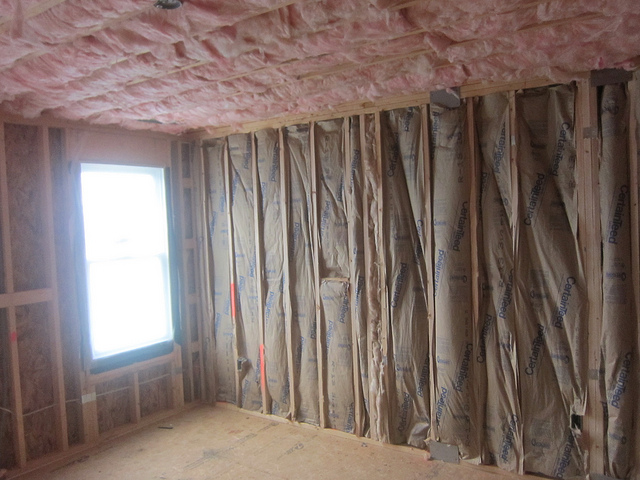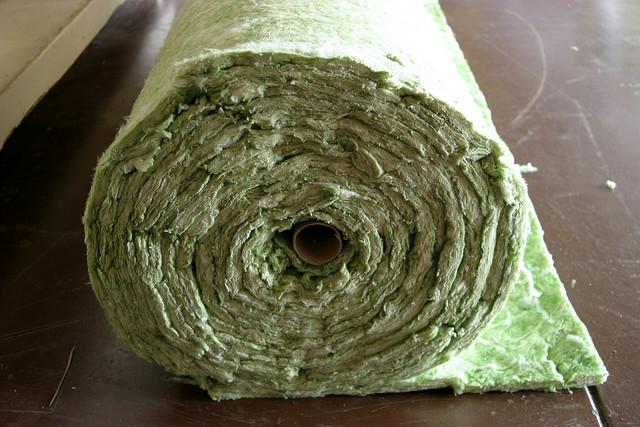The last time we checked in on the topic of insulation and insulating a house to the point where it wouldn’t need a furnace was back in December. Sheesh. The cold has broke here in the northern great lakes region, and while there is still a chill in the air some days, we seem to be headed right into spring. The good news is, insulation is not just a winter topic. Good insulation in your home will help keep it comfortable all year long. And keep your energy bills down. And so we forge ahead with adding insulation for energy efficiency.
Previously, I walked through the calculations to determine the payback period for adding insulation. Today let’s look at a couple of examples of how that might work our in practice.
- R-value of the initial insulation (Ri)
- R-value of the final insulation (Rf)
- Cost of insulation (Ci)
- Efficiency of the heat system (E)
- Cost of energy (Ce)
- Number of Heat Degree Days for the year (HDD)
And the equation looks like this:
P = (Ci * Ri * Rf * E) / (Ce * (Rf – Ri) * HDD * 24)
OK, take a deep breath. We’re about to do some math!
Example 1: Fiberglass Insulation Upgrade
For our first example, we’ll use the following situation: A house in Wisconsin is going to have its insulation upgrades. It currently has fiberglass batting with an R-value of 13, and will be upgraded to fiberglass batting with an R-value of 19. The cost of the new insulation is $0.41 per square foot. The house is heated by a natural gas furnace that is 85% efficient. The cost of natural gas in Wisconsin is $0.82 per therm, and 1 therm is equal to 100,000 Btu (British thermal units). The number of heating degree days for Wisconsin is 7499. We want to find the payback period for the new insulation.
So, breaking down our equation, we have:
Ci = $0.41 per square foot
Ri = 13
Rf = 19
E = 85% = 0.85
Ce = $0.82 per therm = $0.0000082 per Btu
HDD = 7499
P = (0.41 * 13 * 19 * 0.85) / ((0.0000082) * (19 – 13) * 7499 * 24)
P = 9.7 years
Wowza! That’s more time than I was expecting. So what are the key factors here that could cause this to payback period to go down? Well, first of all, with a little more looking, you might be able to find a better price on your insulation than a quick tour through the Home Depot website gave me. Also, natural gas in Wisconsin is pretty dang cheap right now, all things considered. But as more cities and states do things like ban fracking for natural gas, that cost could go up significantly, which would obviously bring the payback period down.
Example 2: Sprayed Foam Insulation – How much can we get?
What if instead of replacing all that R-13 fiberglass insulation with R-19 fiberglass insulation, we wanted to replace it with spray foam insulation?
Spray foam insulation has an R-value per inch of foam thickness. You can increase the total R-value by spraying a thicker layer of foam. There are tons of options available as far as spray foam goes, but for the sake of this example, we will use this Dow Froth Pack as our insulation. This spray foam provides R-6 per inch of thickness, so 1 inch has R-6, 2 inches has R-12, 3 inches has R-18, so on and so forth.
In this example, instead of calculating the payback period for the spray foam insulation, we’re going to see how thick of an insulation layer we can “afford” to apply, given the same payback period as the upgrade from R-13 to R-19 fiberglass. In other words, we are going to solve for Rf.
So, breaking down our equation, we have:
Ci = $1.01 per square foot
Ri = 13
Rf = x
E = 85% = 0.85
Ce = $0.82 per therm = $0.0000082 per Btu
HDD = 7499
P = 9.7 years
Through the magic of algebra, we can rearrange our equation to solve for Rf:
Rf = (P * Ri) – P – ((Ci * Ri * E)/(Ce * HDD * 24))
Which looks gross, but it’s really just a matter of plug and chug at this point:
Rf = (9.7 * 13) – 9.7 – ((1.01 * 13 * 0.85)/(0.82 * 7499 * 24))
Rf = 10.67, or about 1.75 inches thickness of the spray foam insulation.
So, for the same payback period as with the fiberglass insulation, we’d actually be downgrading from R-13 to R-10.67 with the spray foam. If we wanted to increase to the equivalent R-value, our payback period with the spray foam would be nearly twice as long!
But then what’s all the fuss about spray foam insulation? Why would anyone use it if the return on investment is apparently so low? Well, the R-value of the insulation isn’t telling you the whole story here. Remember the walls of your house are not just made out of batts of insulation. There is also the framing, the siding, the sheet rock, and all the other layers to consider. And those layers typically have small cracks and crevices where the heat can leak quite easily. One of the benefits of the spray foam insulation is that it fills in and seals all those leaky spots. So not only do you have the impact of the insulation layer, but you’ve increased the insulation abilities of all those other layers as well. Insulation can be one of those things were whole is greater than the sum of the parts.
Onward, Energy Efficiency Warriors. Next time we visit this topic we’ll get to the big finale: Can you insulate a house enough such that you don’t need a furnace???
…
Keep up with building earth by following us on facebook, pinterest, or on @buildingearth on instagram






